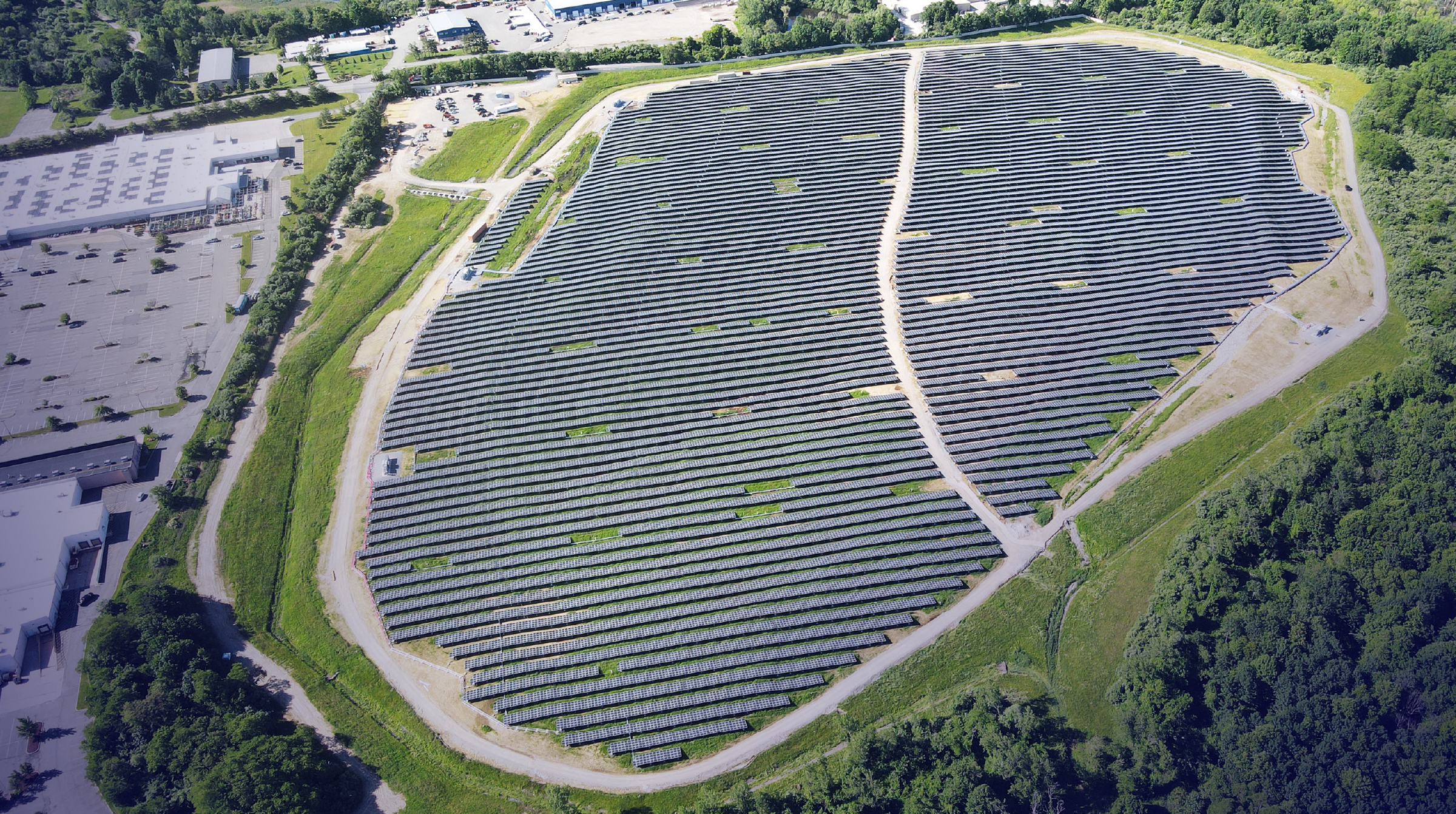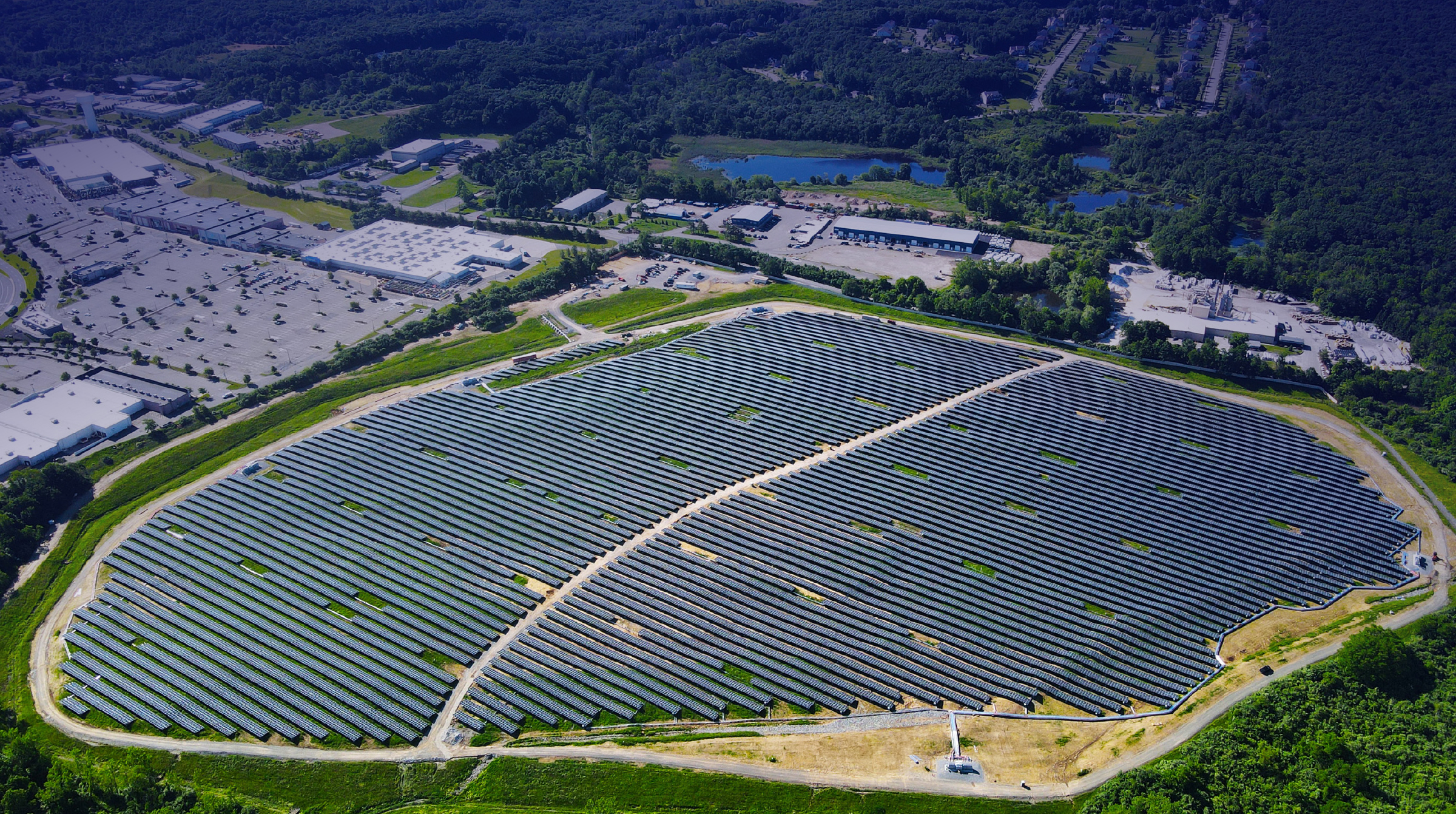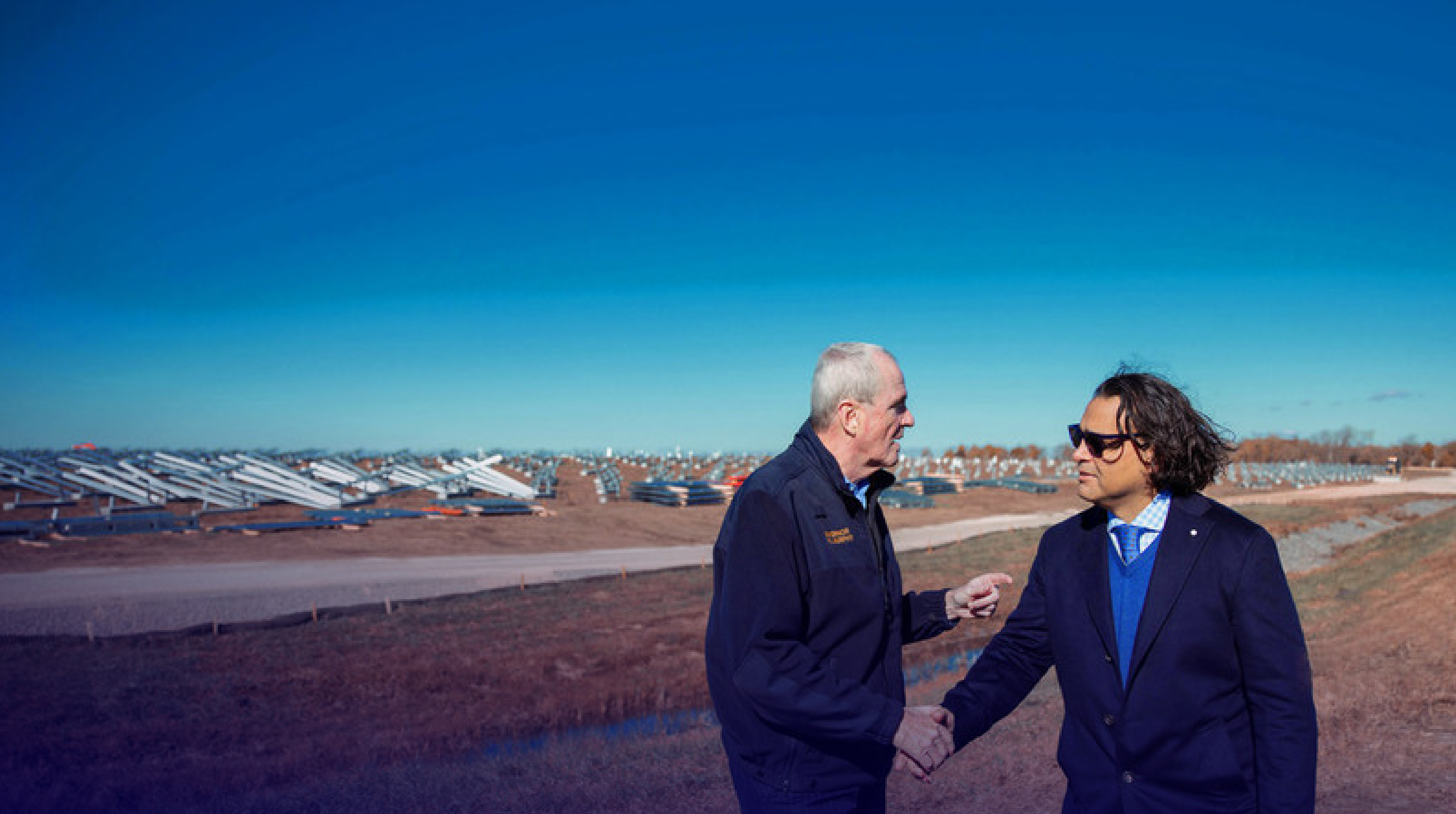
The clean energy future
The transition to renewables is transforming energy production across the country. Both publicly and privately owned waste management facilities have new opportunities to turn unproductive landfills into solar-powered revenue. There has been an 80 percent increase in solar developments on landfills in the last five years nationwide.
Privately owned:
For privately owned waste management companies committed to sustainable leadership, solar on landfills helps meet sustainability goals, generate revenue and offset postclosure care expenses.
Publicly owned:
Landfill solar helps local governments deliver a meaningful impact for their communities by creating lease and tax revenues, local jobs and sustainable energy production for the life of the system.
Our strategic approach offers private and public landfill owners a framework to take advantage of this new trend, converting distressed sites into powerful generation assets.
Multiple challenges, one solution
Challenge: Conversion of prime farmland into solar farms is becoming increasingly more challenging and controversial.
Challenge: Landowners and stakeholders responsible for managing closed landfills face significant postclosure care costs.
Challenge: Waste management companies are increasingly tasked with meeting greenhouse gas (GHG) targets and finding innovative strategies to lower their carbon footprint.
The solution for all: Turn landfills into revenue-producing, solar-generating assets.
Local governments can create sustainable new revenue streams, stimulate local construction jobs and provide low-cost, locally generated energy to the community.
Waste management companies can bolster their environmental leadership, meet their GHG targets, generate new revenue streams and lower operations and maintenance costs.

Six reasons your landfill is a goldmine
There are more than 10,000 closed landfills in the U.S. Where others see eyesores and issues, we see possibilities. Your property represents a goldmine of opportunity with far-reaching economic, community and environmental benefits.
- Economic boosts: The economic stimulus from solar on landfills benefits all stakeholders. Local governments and communities benefit from lease and tax revenue and new jobs. Landowners benefit from lease payments or sale of the distressed property to CEP. Municipalities benefit from reliable funding mechanisms that pay for public needs without compromising other programs’ budgets.
- Community benefits: Landfills and brownfields sites have adverse effects on the surrounding communities. Odors, potential water supply contamination and unappealing aesthetics impact the quality of life and can even bring property prices down. Turning these properties into revenue-generating, clean energy assets provide economic and environmental benefits directly to local neighborhoods, adding value to the community for the life of the system.
- Environmental benefits: Closed landfills carry ongoing environmental concerns, and there is little potential to repurpose the land for more beneficial uses, with the exception of solar and renewable energy. Solar on distressed sites provides the benefits of clean energy and offsets greenhouse gas emissions. Plus, placing solar developments on these properties instead of greenfields is a more land-efficient approach, allowing greenfields to be utilized for other purposes.
- Sustainability leadership: Responsible owners create value from closed landfill sites with carbon-free solar energy, which in turn enables stakeholders to measurably demonstrate leadership and meet greenhouse gas reduction targets. Consideration of future use is a key component of the Environmental Protection Agency’s (EPA) landfill and superfund programs. The EPA is working nationwide to encourage solar and renewable energy development on contaminated lands, engaging with public and private partners in the process.
- Power reliability: Photovoltaic (PV) production is another solar on landfill benefit and can provide grid resiliency, helping meet ever-increasing energy load demands. Leveraging landfills and other distressed sites for solar energy production closes power gaps and provides a reliable and renewable energy source.
- Consumer demand: There is ongoing demand for climate-positive solutions from consumers and the public. In a global survey, solar energy was the no. 1 most favored energy source, and in the U.S., 72 percent of people surveyed said they thought the federal government should encourage solar power.

Case study: The nation’s largest solar landfill project in Mount Olive, New Jersey
Fast facts:
- The New Jersey Township of Mount Olive selected CEP to redevelop the former Combe Fill North Landfill Superfund site and transform it into a solar powerhouse.
- At 25.6 megawatts, Mount Olive is the largest solar landfill project in the U.S. to date, turning the former 65-acre site into a clean, revenue-generating asset.
- CEP has developed over 150 megawatts of solar projects in New Jersey, contributing to the state’s goal of replacing 50 percent of its electricity with renewable energy by 2030.
Background: The Combe Fill North Landfill operated from 1966 to 1978 and accepted both domestic and industrial waste, including sewage sludge. Subsequently, serious contamination from the site related to its past operations was discovered in groundwater, affecting thousands of residents. The EPA declared it a Superfund site in 1983 and devised a cleanup plan for the site with the NJ Department of Environmental Protection, which was completed in 1991.
While many of the environmental concerns were addressed, the site still had limited reuse potential and sat vacant for decades accruing taxes that were due to the municipality over the course of the next 40 years. The Township of Mount Olive recognized the solar opportunity and chose CEP as its development partner.
Challenges and innovative solutions: CEP met each project's complexity with a team of solar experts to ensure flawless execution.
- Challenge: Initiating and managing an effective public-private partnership
Solution: As the developer, CEP handled structured financing, including the purchase of the landfill through redevelopment and tax lien foreclosure. CEP also oversaw successful project execution by bringing in trusted partners. The overall strategy led to a 2021 Award for Innovation in Governance from the New Jersey League of Municipalities and POWER Magazine’s 2023 Top Renewable Energy Plant of the Year Award. - Challenge: Maintaining the integrity of the landfill’s protective cap
Solution: Proper settlement analysis was key to preventing damage to the engineered cap system. CEP brought in an experienced engineering, procurement and construction contractor to build the system while ensuring the integrity of the protective cap—a key part of the past EPA cleanup. This required meticulous site preparation and careful construction execution. - Challenge: Preventing cost escalation through value engineering
Solution: A customized solar-racking provider value-engineered a structural system that optimized the ballasted design and reduced concrete block expenses. The system minimized costs and aligned with revenue goals. - Challenge: Streamlining complexities with skid integration
Solution: A leader in steel and concrete precast products for energy producers contributed high-quality prefabrication and steel skid integration. The company’s efficiency reduced on-site labor and streamlined schedules.

Results: Millions in tax revenue and a template for future success:
- CEP and Mount Olive demonstrated a successful public-private redevelopment partnership.
- Through an innovative tax sale foreclosure/redevelopment deal structure, the township recouped approximately $2.3 million in back taxes upon project completion.
- CEP’s ability to devise a liability-sharing structure with the New Jersey Department of Environmental Protection (NJDEP) and the EPA allowed it to foreclose on the previously municipally owned tax sale certificates and acquire title to the property.
- CEP handled all local, county and state land use permits, state and regional interconnection approvals and easements for interconnection.
- Mount Olive Township will continue reaping the benefits of the project for decades to come.
Harnessing the sun to empower your community
CEP Renewables is a national leader in solar site development, with a 15-year history of pioneering solar energy development opportunities for landfill and brownfield sites. We work closely with landowners and municipalities to increase their property value while reducing carbon emissions and enhancing the quality of life for generations to come.
Contact CEP Renewables to learn how to create new opportunities for your distressed landfill assets.
The author serves as senior project development manager for CEP Renewables and can be reached at kurt_princic@ceprenewables.com.
At CEP, Princic focuses his efforts on bringing solar projects to brownfields, landfills and other distressed properties throughout Ohio.
Prior to his work at CEP, Princic spent 31 years at the Ohio Environmental Protection Agency where he served as district chief of the Northeast District Office from 2011 to 2022. Before this, Princic served as an engineer, supervisor and manager in the Divisions of Solid Waste and Hazardous Waste Management.
Princic earned his bachelor of science degree in environmental engineering technology from the University of Dayton in 1991 and a master’s in public administration from Cleveland State University in 1999.
Latest from Waste Today
- WM reports positive Q1 earnings
- Circular Action Alliance adds to founding members
- Mac Trailer Enterprise to highlight waste solutions at WasteExpo
- Terex Recycling Systems launches electric low-speed shredder
- Arcwood Environmental appoints chief digital and information officer
- Updated: Washington legislature passes EPR bill
- Hoboken, New Jersey, deploys first electric waste collection vehicle
- Michigan lawmakers reintroduce legislation to raise landfill tipping fees





